 DISCUSSION: John Dante Prevedini leads a discussion about Classical Music and Politics, including contributions from Béla Hartmann and James Ross.
DISCUSSION: John Dante Prevedini leads a discussion about Classical Music and Politics, including contributions from Béla Hartmann and James Ross.
- Offenbach
- Giuditta Angiola Maria Costanza Negri
- Dame Janet Baker
- theatre
- Åke Oskar Verner Hermanson
- Carol Ann Duffy: War Photographer
- Handel: Zadok the Priest
- New York Virtuoso Singers
 DISCUSSION: John Dante Prevedini leads a discussion about Composers, individuals or collective?, including contributions from David Arditti, Halida Dinova, Robert McCarney and Jane Stanley.
DISCUSSION: John Dante Prevedini leads a discussion about Composers, individuals or collective?, including contributions from David Arditti, Halida Dinova, Robert McCarney and Jane Stanley.
Pelléas in the Waters
GIUSEPPE PENNISI experiences a new Italian production of Debussy's opera via TV
On 22 April 2021, on RAI5, the debut of Pelléas et Mélisande, co-produced by Teatro Regio di Parma, Teatro Comunale di Modena and Teatro di Piacenza, finally arrived. The production was highly awaited both because the work is rarely staged and because it was initially scheduled for March 2020 as an event to celebrate Parma as the annual Italian capital of culture but was suspended due to the lockdown. You can see and hear it for months on raiplay.it
The production is signed for stage direction, sets and costumes by the French-Canadian creative team Barbe & Doucet, with lighting by Guy Simard. Marco Angius is on the podium of the Emilia-Romagna Orchestra Arturo Toscanini and the Chorus of the Teatro Regio in Parma, prepared by Martino Faggiani. The performers are Monica Bacelli (Mélisande), Phillip Addis, (Pelléas), Michael Bachtadze (Golaud), Vincent Le Texier (Arkël), Enkelejda Shkoza (Geneviève), Silvia Frigato (Yniold) and Andrea Pellegrini (Shepard, Medical Doctor).
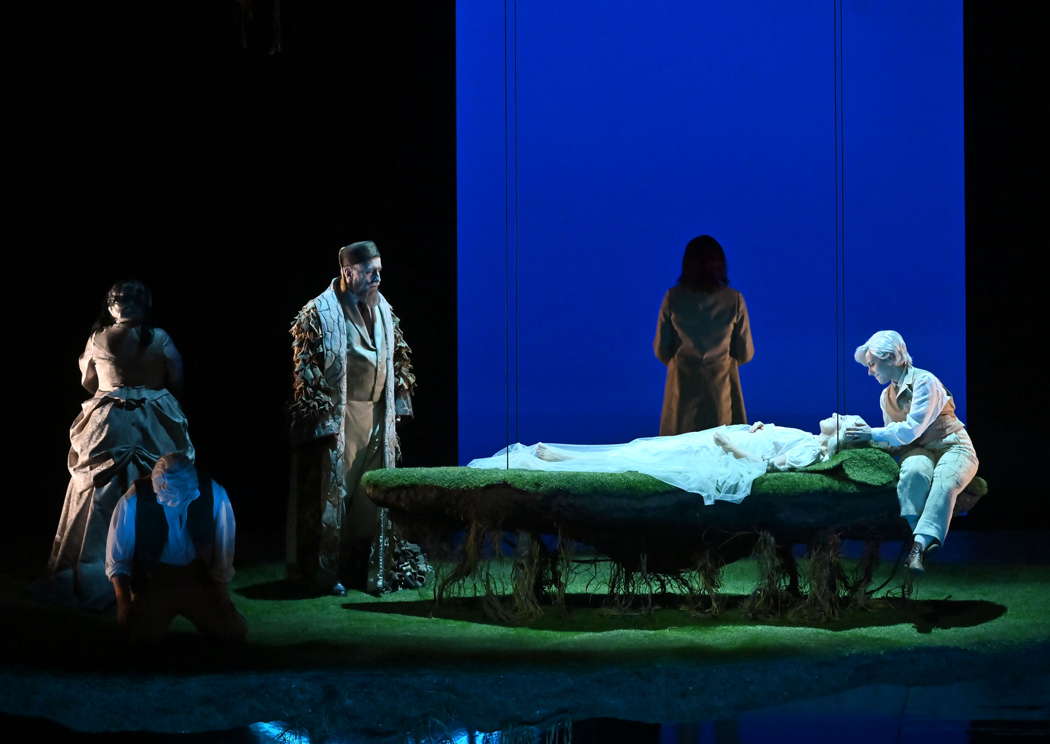
Andrea Pellegrini (Pastore, Medico), Vincent Le Texier (Arkël), Monica Bacelli as Mélisande, Enkelejda Shkoza as Geneviève and Silvia Frigato as Yniold in Claude Debussy's Pelléas et Mélisande at La Scala. Photo © 2021 Roberto Ricci
Pelléas et Mélisande by Claude Debussy is one of the absolute masterpieces of musical theatre. The work, in five acts and twelve scenes, debuted in Paris in 1902 at the Opéra Comique after ten years of laborious negotiations with the author of the prose text - the Belgian symbolist Maurice Maeterlinck. It soon became the emblem of the 'new' - Bergson's intuitionism, Baudelaire's aesthetic, Verlaine and Mallarmé - compared to the 'old': the magniloquent dramaturgy in both Wagnerian and verist music. Yet the mysterious, soft and indefinite lyricism of Pelléas et Mélisande is the most direct continuation of Wagner's aesthetics and poetics. It contrasts sharply with the 'verismo' that, just in those years, was taking hold: the musical burden is entrusted to the orchestra that must support voices capable of making each word understood, in prose and in an archaic French. The twelve scenes are short and it is up to the orchestra to bring the viewer from one environment to another and from one psychological climate to another.
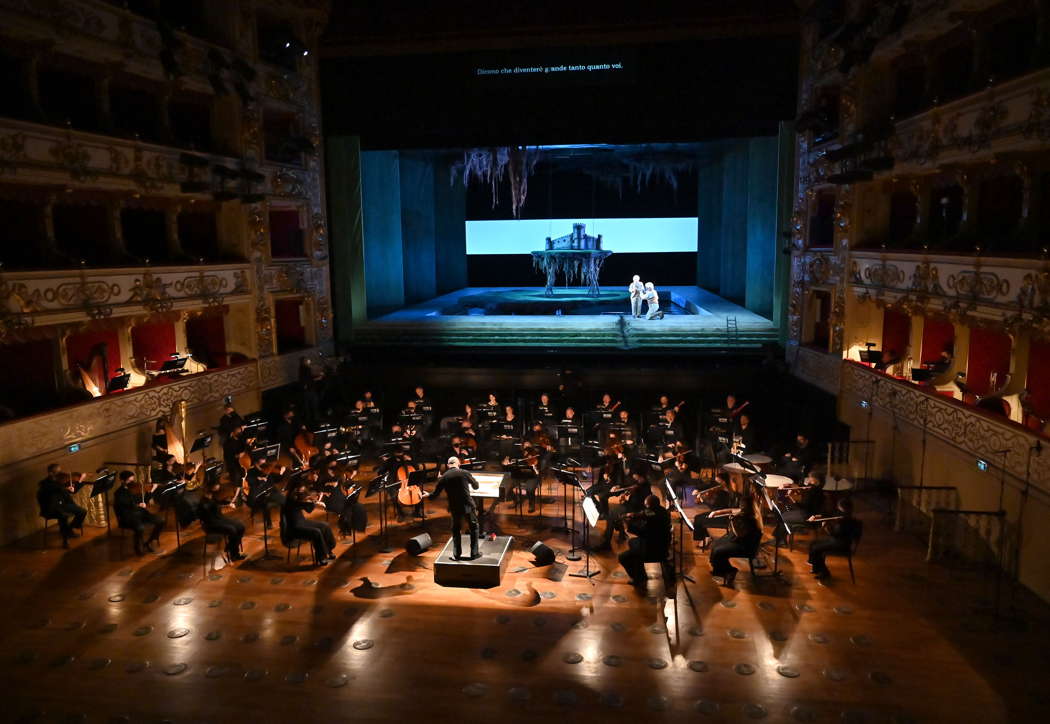
A scene from Pelléas et Mélisande. Photo © 2021 Roberto Ricci
Over the last thirty years, in Italy, the opera has been seen and heard twice at the Teatro dell'Opera in Rome: once in a production of the Spoleto festival and once co-produced with La Monnaie in Brussels, once at La Scala (in a production of the Opéra Comique in Paris) and once at the Maggio Musicale Fiorentino. I recall an excellent performance in Spring 2000 at the Metropolitan Opera House in New York with James Levine in the pit.
This production is one of the rare opportunities to listen to the work as Debussy conceived it, that is, without the interludes added at the Paris Opéra Comique's request to facilitate the numerous changes of sets in a work that involves five acts and twelve scenes. The interludes are very beautiful but they slow down the action and give Wagnerian proportions to the work: well over two hours and forty-five minutes of music in the original version. In the edition presented at La Scala, although there was only one interval, the evening was close to four hours. The elimination of the scene-changes and, therefore, of the interludes, was possible - and this is the second novelty - by focusing on only a very suggestive set.
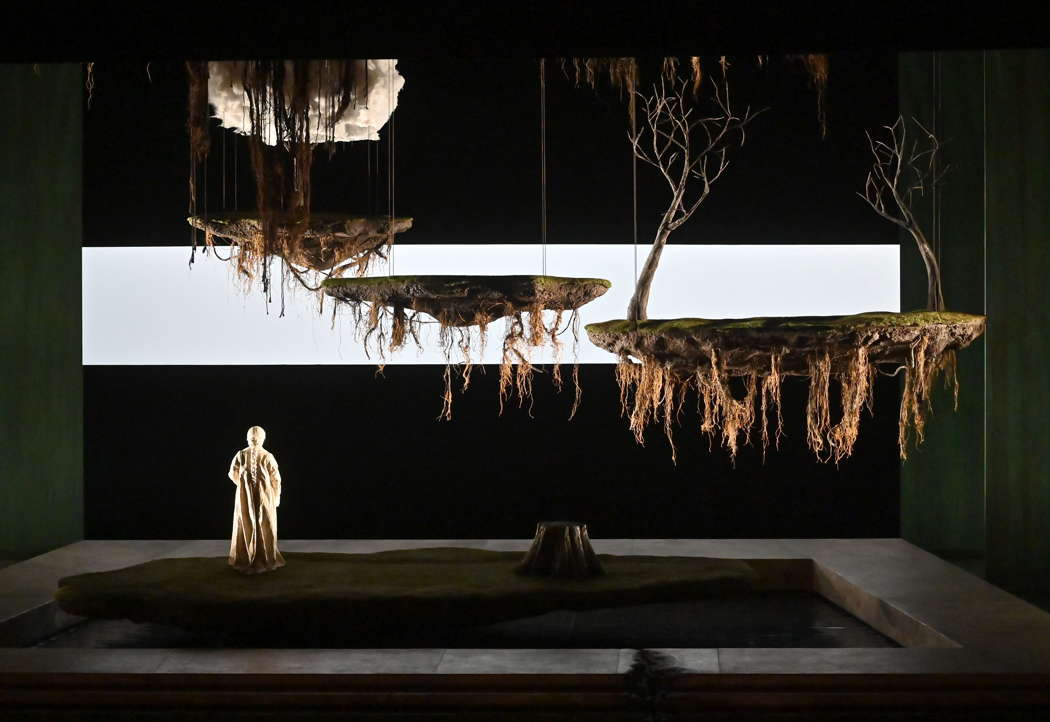
Monica Bacelli as Mélisande in Pelléas et Mélisande. Photo © 2021 Roberto Ricci
These are the key points of the plot. In the dark Middle Ages in Britanny, Prince Golaud, a young widower, meets in a forest the very young Mélisande. She becomes his bride. He takes her to the castle where his teenage half-brother Pelléas also lives. In the boredom of the bleak mansion, between the girl and the boy begins a game that turns first into erotic discovery, then into passion and finally into love. Until the tragic ending in which one brother kills the other and even Mélisande perishes, after giving birth to a little girl. Maeterlinck, author of the drama, was the head of the school of symbolism: the child and 'the human soul who loves to leave alone' (Mélisande's last words) represent hope even in a bleak world like that of Golaud and Pelléas. More important than the story, in which everything is said 'in half', is the atmosphere: oppressive palaces, dense and dark forests, burning channels, moist caves, stagnant waters, unhealthy marshes, lugubrious dungeons, ruined halls and half-destroyed towers. Only at the end is there a glimmer of hope. The music is divided into about sixteen refined leitmotifs - a clear derivation from Wagner's lesson - that intersect in various ways in the complex score.
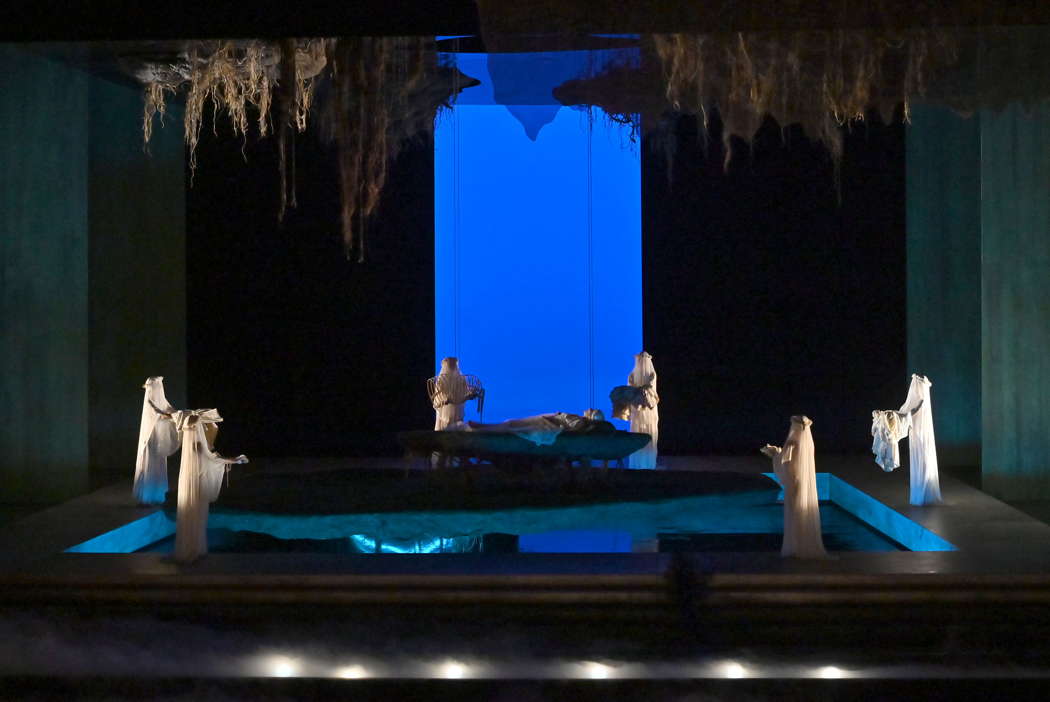
Monica Bacelli as Mélisande (at the centre). Photo © 2021 Roberto Ricci
Barbe & Doucet's much-awaited direction is quite traditional and conceived for theatrical performances rather than for television (as done for recent productions in Rome, Palermo, Naples and Catania). The story is set between a Pre-Raphaelite Middle Ages and the early twentieth century, when Maeterlinck and Debussy conceived the work. There is much emphasis on water and marshes - much more than necessary.
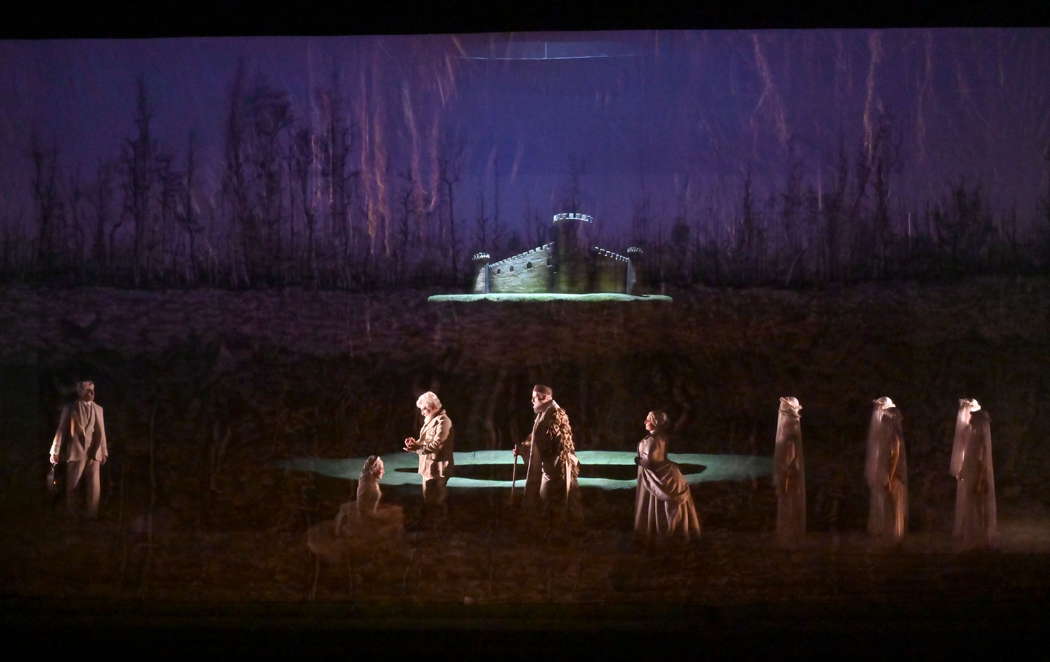
Phillip Addis as Pelléas, Monica Bacelli as Mélisande, Michael Bachtadze as Golaud, Vincent Le Texier as Arkël and Enkelejda Shkoza as Geneviève in Pelléas et Mélisande. Photo © 2021 Roberto Ricci
Marcus Angius conducts the orchestra quite precisely. It is a question of preferences; I like more a reading like that by Pierre Boulez in an important recorded edition or that of Gianluigi Gelmetti about fifteen years ago in Rome: tight tempos, not dilated, in order to increase tension.
The voices are good. Monica Bacelli has been the role specialist for years.
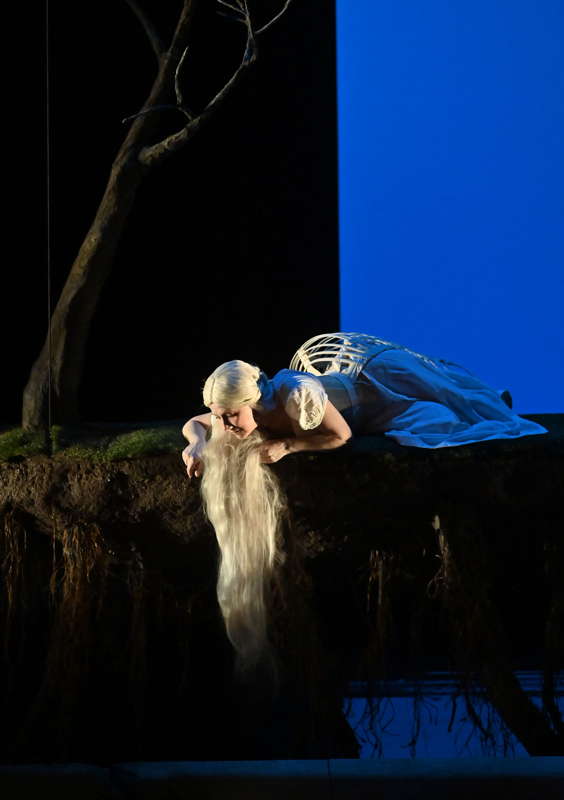
Monica Bacelli as Mélisande in Pelléas et Mélisande. Photo © 2021 Roberto Ricci
Her Pelléas is the young Phillip Addis. He has the physique du role.
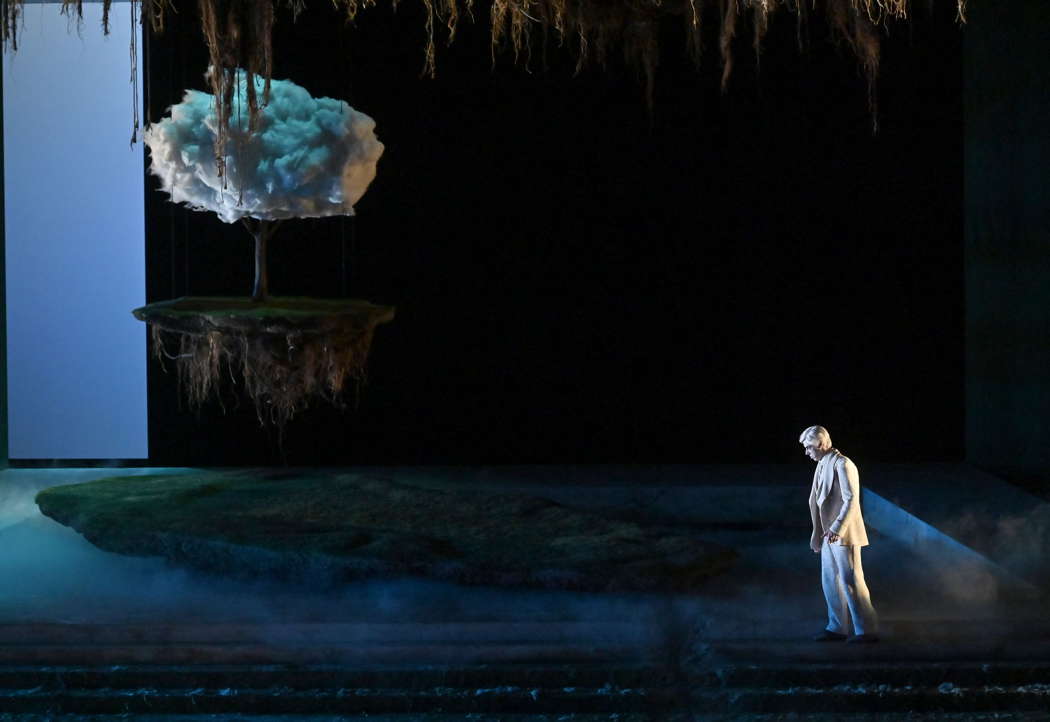
Phillip Addis as Pelléas in Pelléas et Mélisande. Photo © 2021 Roberto Ricci
Nonetheless, I do not agree with the decision to entrust the part to a lyric tenor instead of a light baritone (such as Rod Gilfry, Bernard Richter or Ludovic Tézier) as foreseen by Debussy – precisely to contrast it with a dark baritone in the Golaud role - here an excellent Michael Bachtadze.
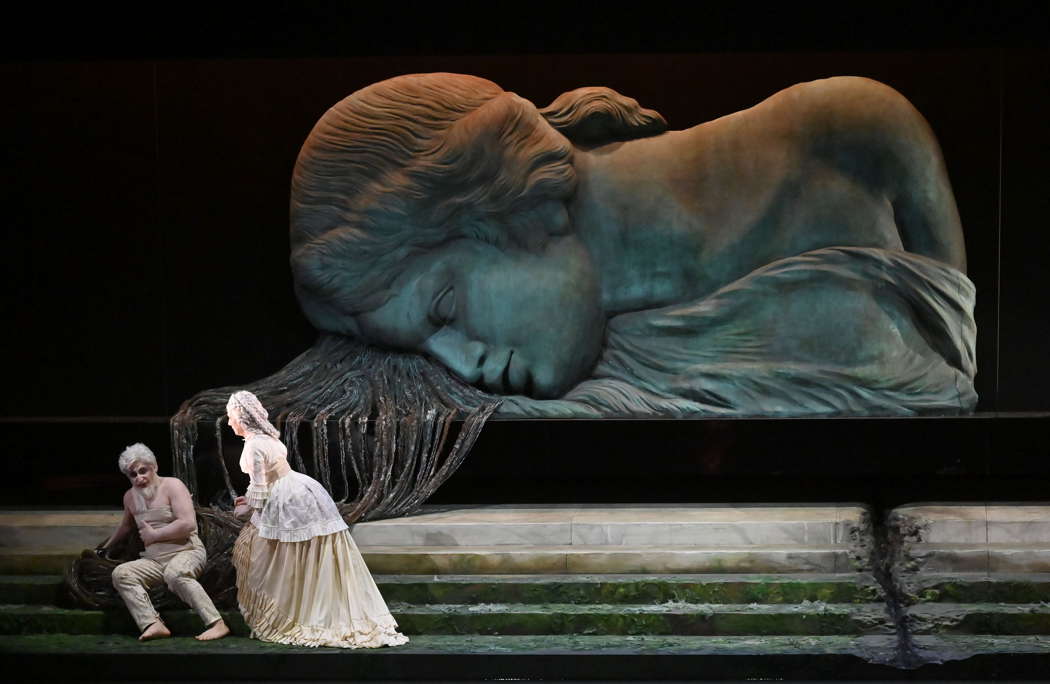
Michael Bachtadze as Golaud and Monica Bacelli as Mélisande in Pelléas et Mélisande. Photo © 2021 Roberto Ricci
In addition, a light baritone duets better with a mezzo (Bacelli / Mélisande), especially in the great love scene of the fourth act. Such a mistake was made at Maggio Fiorentino when Paolo Fanale duetted with Monica Bacelli: why repeat it? Among the others, Silvia Frigato as Yniold stands out.
Copyright © 24 April 2021
Giuseppe Pennisi,
Rome, Italy



